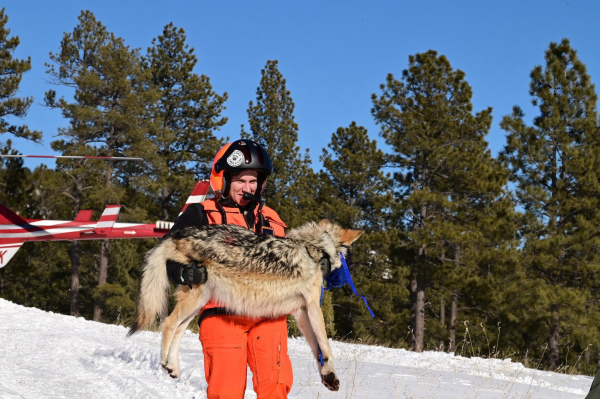Grizzly Bears to Remain Protected
GW: What good are recovery goals?
Yesterday, the U.S. Fish and Wildlife Service (USFWS) denied two petitions from Montana and Wyoming to delist grizzly bears in the Greater Yellowstone and Northern Continental Divide Ecosystems. This denial comes a day after the USFWS denied Sportsmen’s Alliance Foundation’s petitions to delist wolves in the Western Great Lakes.
Like the gray wolf, the grizzly bear is no stranger to Endangered Species Act (ESA) litigation. Grizzlies in the lower-48 states were first protected under the ESA in 1975. They were subsequently divided into several Distinct Population Segments. The Greater Yellowstone Ecosystem bears, which exist in portions of Idaho, Montana, and Wyoming, were given a recovery population goal of 500. The current estimated population is around 1,000. These bears were delisted under the George W. Bush administration in 2007. That delisting was overturned by the courts. They were delisted again in 2017, under a rulemaking that spanned the Obama and Trump administrations. That was again overturned by the courts in 2020.
The Northern Continental Divide Ecosystem bears exist in northern Montana. Their recovery goal is a population of at least 800 bears. Their population is currently estimated to be over 1,100.
Since these bears have surpassed their recovery goals and have expanded their range, the states petitioned USFWS to delist them. USFWS denied those requests.
USFWS is instead proposing a new rule to combine those populations into one larger distinct population segment covering Washington, Idaho, Montana, and Wyoming. New recovery goals will need to be established, and the bears will not be able to be delisted until they are recovered throughout that area. Moving the goalposts in this manner presents a giant hurdle to delisting or downlisting grizzlies in the future.
“This shows that the Endangered Species Act is broken,” said Michael Jean, Litigation Counsel for Sportsmen’s Alliance Foundation. “We have multiple populations of different species that have surpassed their recovery goals—and are thriving—yet they cannot be delisted, according to the service, because they have not fully recovered in other areas.”
One thing that is certain is that this is not over. Wyoming has already sued USFWS for failing to act timely on its petition, and the court ordered USFWS to issue a decision on the petition. Wyoming is now likely to file a separate lawsuit challenging the denial. Sportsmen’s Alliance will look at intervening in that case—as it did when the 2017 delisting was challenged in court.
These denials – combining the grizzly bear and gray wolf denials within days of each other – could also prompt Congress to act. These actions illustrate that the USFWS is unwilling to delist recovered populations because of the status of the so-called “remnant” populations in other areas of the country that have not recovered. This is likely to always be the case. Congress acted in 2011 when it passed a bill ordering USFWS to delist gray wolves in the Northern Rocky Mountain region and will likely need to act in a similar vein for grizzlies and other thriving wolf populations.
“Whatever happens next, Sportsmen’s Alliance will be involved. This issue is too important for our community to not remain a focus of our ongoing work,” Jean concluded.




